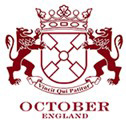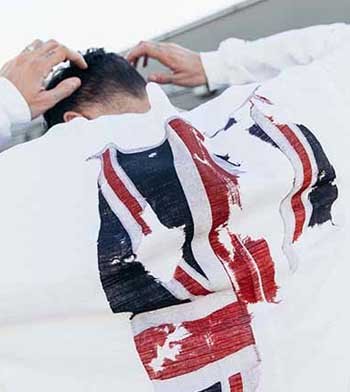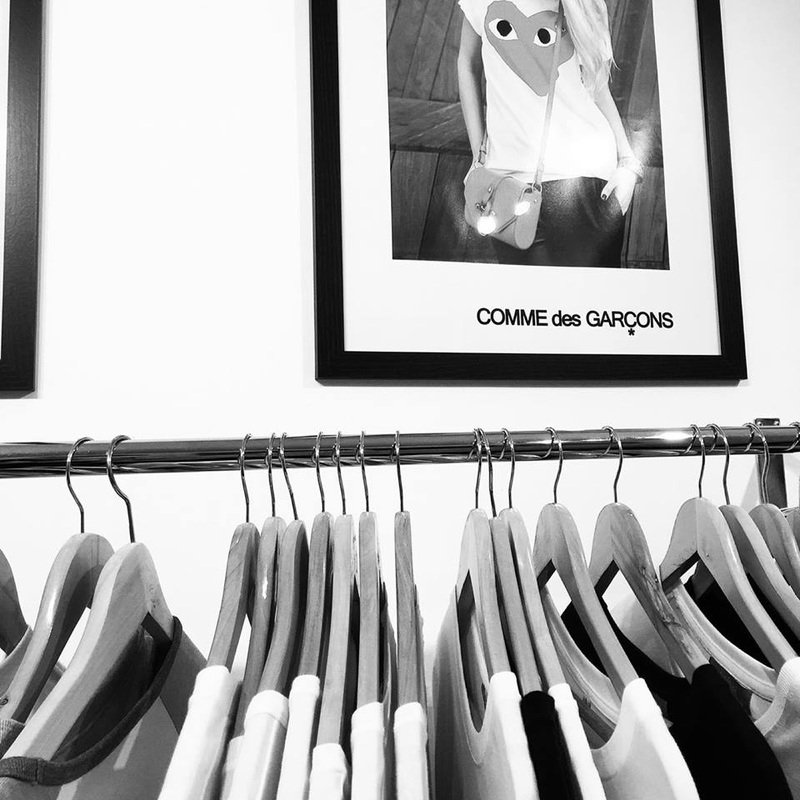With ethical issues dominating the headlines, we’re constantly being bombarded with cryptic acronyms that are difficult to decipher and words like ‘sustainable’, ‘green’ and ‘eco’ are banded around on a regular basis.
To try and diffuse this ethical minefield, Epona’s Juliet Bacon has broken down some of the more common terms into an easy to use A-Z guide and looked at why you might, or might not, choose to go for some of the eco options available
A
Azo free dyes. The manufacture and use of synthetic dyes are two of the world’s most polluting industries and azo dyes make up around 70% of all dyes used to colour fabric. There are serious concerns about the safety of azos. Most azos are water-soluble and there is the risk that carcinogenic chemicals from these dyes can be absorbed by the body through skin contact. Dye house workers have been know to suffer from asthma, allergies, birth defects and reproductive damage. Alongside the human cost, considerable environmental damage is caused by chemicals from these dyes. GOTS prohibits the use of all amine releasing azo dyes and many companies are choosing to ban azos themselves.
B
Banned substances lists cut out or cut down on harmful chemicals used to manufacture clothes. According to Greenpeace, among the most hazardous substances commonly used in the textile sector are lead, nickel, chromium IV, aryl amines, phthalates and formaldehyde. Marks & Spencer is the first major retailer to set its own standards that ban or restrict chemicals on the products it sells and has an Environmental Code of Practice for dyeing and finishing. Manufactures in the promotional industry have the opportunity to lead the way by introducing their own banned substances list.
Bamboo is an innovative ‘eco-textile’. It grows naturally and is sustainable, thriving without pesticides or fertilizers, and reproduces rapidly across large areas where it is known to improve soil quality in degraded and eroded areas of land. It is not really seen as a replacement for cotton, more as an alternative fabric that is particularly suitable for high end garments, due to its silky feel, and sportswear because it has a natural antibacterial quality which means the fabric stays around two degrees cooler in hot weather. On top of this, the garment will biodegrade, so it won’t clog up landfills once its product lifecycle is complete.
Biodegradable plastics degrade through naturally occurring micro organisms, such as bacteria, but there is no requirement for leaving “no toxic residue”. If you want a more environmentally friendly product, it is better to opt for a compostable plastic. Compostable plastics biodegrade and then disintegrate within a set period of time, without producing any toxic material and the compost left can support plant life.
Bluesign standard is a business-controlled environmental scheme to remove any substances that are potentially hazardous to human health or the environment from the entire textile supply chain. The standard takes into account chemicals from the ‘restricted substance list’, water and air emissions, resource consumption and workplace conditions.
C
Codes of Conduct. Most manufacturers now agree they have a responsibility to help improve the labour conditions of their suppliers. Many have developed codes of conduct or lists of labour standards they say they are meeting in their workplaces. The reality behind these codes however, is often still quite grim. Wages are too low to live on, 80-hour working weeks are common, and the health and safety of the workers, the majority of whom are women, is constantly being undermined. Workers have no security of employment, women are discriminated against and harassed, sometimes sexually. Workers are often not allowed to form trade unions. Sometimes this is because the right to organise is not recognised in the zone or country where they work. However, more often obstacles are put up specifically to prevent workers from exercising their right to collective bargaining. Some companies opt to sign up to one of the many multi-stakeholder ethical trading initiatives that oversee the implementation of specific codes of conduct based on the International Labour Organisation’s (ILO) conventions. Some of the better known initiatives include:
Ethical Trading Initiative (ETI)
This is the largest UK-based initiative and is partially supported by the UK government. The main idea of the ETI is for companies to work in collaboration with NGOs and trade unions to learn the best way to implement codes. The ETI has its own code which is used as the basis for pilot projects. Corporate members must participate in ETI activities and provide the ETI secretariat with annual reports on their progress with respect to the code implementation.
Fair Labour Association (FLA)
The FLA grew out of the Apparel Industry Partnership (AIP), an initiative of US President Bill Clinton, established to address labour standards of clothing sold to US-based colleges and universities. Approximately 1,100 suppliers are taking part in the FLA’s licensee program. The FLA is governed by a board of companies, universities and NGO’s, but trade union organisations pulled out after disputes over code content. The FLA accredits independent monitors that verify compliance through factory inspections and filing reports that are accessible to the public. Where non-compliance is identified, participating companies are required to implement a remediation plan.
Fair Wear Foundation (FWF) aims to promote humane labour conditions in the garment industry. It is an initiative of business associations in the garment sector, trade unions, and NGOs. FWF was founded in The Netherlands, but is currently working hard to join similar initiatives in Europe.
Workers Rights Consortium (WRC) is an independent labour rights monitoring organisation, conducting investigations of working conditions in factories around the globe to combat sweatshops and protect the rights of workers who make apparel sold to the United States.
But does this really work? While it is positive that manufacturers are starting to sign up to these initiatives, it is hard to tell the extent companies are practicing the principles they’ve signed up to behind closed doors. Primark joined the ETI in May 2006. In December that year, War on Want published a report on workers at factories in Bangladesh that supply to ETI members Primark, Tesco and ASDA/George. These workers were typically paid 5p an hour and worked 80 hours a week. Sam Maher of Labour behind the Label says: “None of the companies can guarantee that all parts of their supply chain implement the ETI Base Code. The main issue is that there is no transparency – the reviews, criteria for inclusion and exclusion in the ETI are all confidential, so as a pressure group it is hard to know what to try to hold them to. However, when there is an urgent issue involving a specific violation, it’s much easier to get the companies involved to sit around a table and discuss it.”
Multi stakeholder initiatives are clearly a good start in encouraging companies to address problems with their supply chain, but the success of these initiatives is heavily dependent upon the genuine commitment of the company to implement and uphold significant changes.
Carbon Reduction refers to finding ways to reduce the carbon footprint of your company. If your organisation spends more that £50K per year on energy, the Carbon Trust will send out agents free of charge to suggest ways of reducing the amount of carbon you produce. The aim is to become as energy efficient as possible by using renewable energy, shipping rather than flying goods and cutting down on energy intensive processes.
Carbon Neutral: Once you have done this and worked out how much carbon you are still producing, you can become carbon ‘neutral’ by offsetting this amount. One way of doing this is to work with an organisation that funds projects to prevent other companies from producing carbon. To give an example, you might help a school in Africa to put in a wind powered generator rather than a diesel one. By preventing carbon from being produced, you are balancing out the carbon your company produces.
D
E
Eco-label is a European voAndyary certification scheme, represented by a flower logo, which aims to reduce the environmental impact of products, taking a ‘from the cradle to the grave’ approach. Products and processes are independently tested according to ecological criteria that includes: reducing the amount of toxic residues found in fibres, water pollution in fibre processing and the use of heavy metals and formaldehyde.
Environmental Justice Foundation (EJF) is a campaigning group that makes a direct link between the need for environmental security and the defence of basic human rights. They are responsible for the ‘Pick your cotton carefully’ campaign that encourages manufacturers to state where they buy their cotton from; White Gold, which highlights the plight of cotton farmers in Uzbekistan; and reporting on child labour throughout the world.
Environmentally Friendly? It takes around 8,000 chemicals to turn raw materials into clothing. Many of these cause irreversible damage to people and the environment. The bleaching, dyeing, sizing and finishing of textiles all result in large quantities of effluent, often containing highly toxic heavy metals that pollute the soil and water and damage aquatic life. Each year, the global textile industry discharges 40-50,000 tons of dye into rivers and streams. Add to that the carbon emissions and impact of growing non-organic cotton, which uses petrochemical fertilisers and leads to reduced soil fertility, soil erosion, water pollution and reduced biodiversity. Then there’s the high-energy manufacturing process and the clothes miles in transporting the fibre/textiles/garments around the world. Once bought, how an item is cared for and disposed of also has an impact on the environment. Manufacturers of promotional clothing have started to take these environmental factors into consideration by producing clothing that is both kind to the environment and to the garment workers.
Continues next month
For more information contact: Juliet@eponaclothing.com or go to the Epona website: http://www.eponaclothing.com/
Published: 01 May, 2008 Printwear and Promotion magazine
t shirt printing, screen printing, embroidery












